

Everything is made up of electromagnetic energy vibrating at different frequencies that correspond to sound, light and color. We are drawn to the colors needed to create balance in our lives, the goal in all healing. Our consciousness and emotions align with the colors we wear, home design, and often our diet. Some people dream in color, others in black and white. ROYGBIV is an acronym for the sequence of hues commonly described as making up a rainbow.
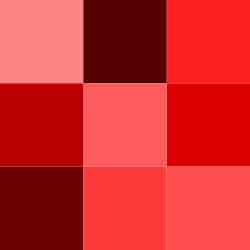
Red is any of a number of similar colors evoked by light consisting predominantly of the longest wavelengths of light discernible by the human eye, in the wavelength range of roughly 625-740 nm. Longer wavelengths than this are called infrared, or below red and cannot be seen by the naked human eye. Red is used as one of the additive primary colors of light, complementary to cyan, in RGB color systems. Red is also one of the subtractive primary colors of RYB color space but not CMYK color space.
In human color psychology, red is associated with heat, energy and blood, and emotions that "stir the blood", including anger, passion, and love.
Red is any of a number of similar colors evoked by light consisting predominantly of the longest wavelengths of light discernible by the human eye, in the wavelength range of roughly 630-700 nm. Longer wavelengths than this are called infrared, or below red and cannot be seen by human eyes.
Red's wavelength has been an important factor in laser technologies as red lasers, used in early compact disc technologies, are being replaced by blue lasers, as red's longer wavelength causes the laser's recordings to take up more space on the disc than blue lasers. Red light is also used to preserve night vision in low-light or night-time situations, as the rod cells in the human eye aren't sensitive to red. Red is used as one of the additive primary colors of light, complementary to cyan, in RGB color systems. Red is also one of the subtractive primary colors of RYB color space but not CMYK color space.
One common use of red as an additive primary color is in the RGB color model. Because "red" is not by itself standardized, color mixtures based on red are not exact specifications of color either. In order to produce exact colors the color red needs to be defined in terms of an absolute color space such as sRGB. As used in computer monitors and television screens, red is very variable, but some systems may apply color correction (so that a standardized "red" is produced that is not in fact full intensity of only the red colorant).
A red filter used in black and white photography increases contrast in most scenes. For example, combined with a polarizer, it can turn the sky black. Films simulating the effects of infrared film (such as Ilford's SFX 200) do so by being much more sensitive to red than to other colors. Red illumination was (and sometimes still is) used as a "safelight" while working in a darkroom, as it does not expose most photographic paper and some films. Though many more modern darkrooms use an amber safelight, red illumination is closely associated with the darkroom in the public mind.
The word red comes from the Old English read. Further back, the word can be traced to the Proto-Germanic rauthaz and the Proto-Indo European root reudh-.
This is the only color word which has been traced to an Indo-European root.
In Sanskrit, the word rudra means red. In the English language, the word red is associated with the color of blood, certain flowers (i.e. roses), and ripe fruits (i.e. apples, cherries). Fire is also strongly connected, as is the sun and the sky at sunset.
Healthy people are often said to have a redness to their skin color (as opposed to be appearing pale). After the rise of socialism in the mid-19th century, red was to describe revolutionary movements. The word is also obviously associated with anything of the color occupying the lower end of the visible light spectrum, such as red hair or red soil.
Red Indians is a British term for Native Americans, American terms for this ethnic group include redskin, redhead and red man, though they are not the preferred terms.
In astronomy, stars of spectral type M (the stars with the coolest temperature) are classified as red stars.
Mars is called the Red Planet because of the reddish color imparted to its surface by the abundant iron oxide present there. Astronomical objects which are moving away from the observer exhibit a red shift.
Jupiter's surface displays a Great Red Spot, a football-shaped area south of the planet's equator. Astronomers believe the spot to be some kind of storm.
Oxygenated blood is red due to the presence of oxygenated hemoglobin.
Red light is the first to be absorbed by sea water, so that many fish and marine invertebrates that appear bright red are black in their native habitat.
When used about animal coloration red usually refers to a brownish, reddish-brown or ginger color. In this sense it is used to describe coat colors of reddish-brown cattle and dogs, and in the names of various animal species or breeds such as red fox, red squirrel, red deer, Robin Redbreast, Red Grouse, Red Knot, Redstart, Redwing, Red Setter, Red Devon cattle etc.
The usage for animal color appears similar to that for red ochre, red hair and Red Indian.
Red appears to be rarely used in names of animals which are a brighter blood-red or scarlet color (Carmine Bee-eater, Scarlet Tanager). When used for flowers, red often refers to purplish (red deadnettle, red clover, red helleborine) or pink (red campion, red valerian) colors.
Aggression, anger, blood, blushing, stop, Communism, courage, danger, guilt, energy, fire, hate, hell, honor, leadership, passion, socialism, sacrifice, sex, sin, violence, negativity, warning.
A biblical example is found in Isaiah: "Though your sins be as scarlet, they shall be white as snow." Also, The Scarlet Letter an 1850 American novel by Nathaniel Hawthorne, features a woman in a Puritan New England community who is punished for adultery with ostracism, her sin represented by a red letter 'A' sewn into her clothes. This all comes from a general Hebrew view inherited by Christianity which associates red with the blood of murder, as well as with guilt in general.
Another popular example of this is in the phrase "caught red-handed", meaning either caught in an act of crime or caught with the blood of murder still on one's hands. At one point, red was associated with prostitutes, or now, with brothels (red-light districts).
In Roman Catholicism, red represents wrath, one of the Seven Deadly Sins. In Christianity, Satan is usually depicted as colored red and/or wearing a red costume in both iconography and popular culture. Statistics have shown that red cars are more likely to be involved in accidents.
The color red is associated with lust, passion, love, and beauty as well. The association with love and beauty is possibly related to the use of red roses as a love symbol. Both the Greeks and the Hebrews considered red a symbol of love, as well as sacrifice. Psychological research has shown that men find women who are wearing red more attractive.
Red is also used as a symbol of courage and sacrifice, as in blood spilt in sacrifice or courage in the face of lethal danger. Examples of this are found in the flags of many nations including the United States, as well as in the novel The Red Badge of Courage, in which a soldier in the American Civil War discovers the meaning of courage.
Besides the association with guilt previously mentioned, in Christianity, red represents the color of Christian martyrs who suffered death for their faith. It is sometimes used for Holy Thursday and during Eastertide, and red green and white is the color scheme of Christmas. In Roman Catholic tradition it is used for all feast days of Christian martyrs as well as Palm Sunday in anticipation of the death of Jesus.
Along the same lines, red is associated in Roman mythology with the god of war, Mars. A Roman general receiving a triumph had his entire body painted red in honor of his achievement.The phrase "red-blooded" describes someone who is audacious, robust, or virile.
In English heraldry, red (called gules) denoted ardent affection or love, while crimson (blood-color) stood for boldness, enthusiasm, or impetuosity.
Red catches people's attention, and is often used either in a negative way to indicate danger and emergency, or in a positive way in advertising to gain more viewers, or in nature, as a ripe fruit announces its readiness with its red color. Several studies have indicated that red carries the strongest reaction of all the colors, with the level of reaction decreasing gradually with orange, yellow, and white, respectively. Because of this, scientists have repeatedly recommended red for warning signals, labels, and signs. Because of these recommendations, red has seen widespread use as a danger signal, in stop signs, to warn people of extreme heat or flammability, and even to signal warnings in sports such as soccer.
Red may represent fire and so may symbolize the presence of God.
In Christianity, red is the liturgical color for Pentecost. Also, in the Catholic Church red is the color of a martyr.
In Islam red is the color for sacrificement and courage. Many Islamic states have it as a sign of the courage of Muslims and the sacrifice of their lives for what is good.
In metaphysics red connects with the root chakra.
Alice Bailey developed a system called the Seven Rays, where she classified humans into seven different metaphysical psychological types, the "sixth ray" of "love-devotion" is represented by the color red. People who have this metaphysical psychological type are said to be "on the Red Ray".
Psychics who claim to be able to observe the aura with their third eye report that a red aura is associated with a love of sports and physical exercise.
In China, red is the symbol of fire and the south (both south in general and Southern China specifically). It carries a largely positive connotation, being associated with courage, loyalty, honor, success, fortune, fertility, happiness, passion, and summer. In Chinese cultural traditions, red is associated with weddings (where brides traditionally wear red dresses) and red paper is also frequently used to wrap gifts of money or other things. Special red packets called hong bao as in Mandarin or lai see as in Cantonese - are specifically used during the Chinese New Year to give monetary gifts. On the more negative end, obituaries are traditionally written in red ink, and to write someone's name in red signals either cutting them out of your life, or that they have died. Red is also associated with both the feminine yin and the masculine yang, depending on the source. When someone commits suicide, especially a female, and wants to haunt their loved one, they will dress in red from top to bottom before carrying out the act.
In Japan, red is a traditional color for a heroic figure.
In the Indian Sub-continent, red is the traditional color of bridal dresses, and is frequently represented in the media as a symbolic color for married women. The color is associated with sexuality in marriage relationships through its connection to heat and fertility. It is also the color of wealth, beauty, and the goddess Lakshmi.
In Central Africa, Ndembu warriors rub themselves with red during celebrations. Since their culture sees the color as a symbol of life and health, sick people are also painted with it. Like most Central African cultures, the Ndembu see red as ambivalent, better than black, but not as good as white. In other parts of Africa, however, red is a color of mourning, representing death. Because of the connection red bears with death in many parts of Africa, the Red Cross has changed its colors to green and white in parts of the continent.
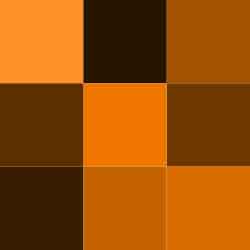
The color orange occurs between red and yellow in the visible spectrum at a wavelength of about 585 - 620 nm, and has a hue of 30 degrees in HSV color space. The complementary color of orange is azure, a slightly greenish blue. Orange pigments are largely in the ochre or cadmium families, and absorb mostly blue light.
The color is named after the orange fruit, introduced to Europe via the Sanskrit word naranja. Before this was introduced to the English-speaking world, the color was referred to (in Old English) as geoluhread, which translates into Modern English as yellow-red. The first recorded use of orange as a color name in English was in 1512, in the court of King Henry VIII.
In metaphysics orange connects with the spleen chakra.
Orange is the color of creativity, sexuality, joy, enthusiasm, and promotes a general sense of wellness.
Orange Crystals include Orange Amber, Carnelian, Citrine, Orange Jade, Orange Calcite, Fire Agate, Orange Quartz, Orange Rhodochrosite, Orange Garnet, more
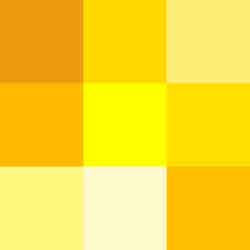
Yellow is the color evoked by light that stimulates both the L and M (long and medium wavelength) cone cells of the retina about equally, but does not significantly stimulate the S (short-wavelength) cone cells; that is, light with much red and green but not very much blue.
Light with a wavelength of 570-580 nm is yellow, as is light with a suitable mixture of somewhat longer and shorter wavelengths. Yellow's traditional RYB complementary color is purple, violet or indigo. Yellow's colorimetrically defined complementary color in both RGB and CMYK color spaces is blue.
The word yellow comes from the Old English geolu, which derived from the Proto-Germanic word gelwaz. The oldest known usage of this word in English is in the Old English poem Beowulf, in a description of a shield made of wood from a yew tree.
In the English language, yellow is used to describe objects having the color between green and orange in the visible light spectrum (gold, egg yolks, sunflowers, etc.). The color is associated with age and aging, both with people and objects (e.g. yellowed-paper). Ethnographically, the term yellow has also been used as a slang term for both oriental persons and light-skinned African-Americans. The term is associated at times with jealousy, as well as cowardliness. Lastly, it is associated with sensational journalistic practices, or yellow journalism, and resistance to militant trade unions.
In metaphysics orange connects with the solar plexus.
Yellow is the color of intellect and it is used for mental clarity. Linked to the sun and the lion, yellow is connected to the source of creation as its frequency emerges into white light and consciousness.
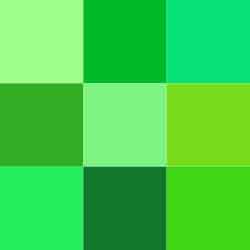
Green is a color, the perception of which is evoked by light having a spectrum dominated by energy with a wavelength of roughly 520-570-nm. In the subtractive color system, it is not a primary color, but is created out of a mixture of yellow and blue, or yellow and cyan; it is considered one of the additive primary colors. On the HSV color wheel, the complement of green is magenta; that is, a purple color corresponding to an equal mixture of red and blue light. On a color wheel based on traditional color theory (RYB), the complementary color to green is considered to be red.
The word green is closely related to the Old English verb growan, 'to grow'. It is used to describe plants or the ocean. Sometimes it can also describe someone who is inexperienced, jealous, or sick. In America, green is a slang term for money, among other things. Several colloquialisms have derived from these meanings, such as 'green around the gills', a phrase used to describe a person who looks ill.
Several minerals have a green color, including the emerald, which is colored green by its chromium content. Animals such as frogs, lizards, and other reptiles and amphibians, fish, insects, and birds, appear green because of a mixture of layers of blue and green coloring on their skin. By far the largest contributor to green in nature is chlorophyll, the chemical by which plants photosynthesize. Many creatures have adapted to their green environments by taking on a green hue themselves as camouflage.
Culturally, green has broad and sometimes contradictory meanings. In some cultures, green symbolizes hope and growth, while in others, it is associated with death, sickness, envy or the devil.
The most common associations, however, are found in its ties to nature. For example, Islam venerates the color, as it expects paradise to be full of lush greenery. Green is also associated with regeneration, fertility and rebirth for its connections to nature. Recent political groups have taken on the color as symbol of environmental protection and social justice, and consider themselves part of the Green movement, some naming themselves Green parties. This has led to similar campaigns in advertising, as companies have sold green, or environmentally friendly, products.
The word green comes from the Old English word grene, or, in its older form, groeni. This adjective is closely related to the Old English verb growan (to grow) and goes back into Western Germanic and Scandinavian languages.
The word designates the color on the visible light spectrum situated between blue and yellow. It is often used to describe foliage and the sea, and has become a symbol of environmentalism. It also is combined with other color names to increase specificity, as in blue-green, or with objects, as in emerald green. Green is also used to describe jealousy and envy, as well as anyone young, inexperienced, or gullible (probably by analogy to unripe, i.e. unready or immature, fruit).
Green is sometimes associated with nausea and sickness.
Lastly, green can communicate safety to proceed, as in traffic lights.
Overall, greens, along with blues and purples, are frequently described as cool colors, in contrast to red and yellow.
Some languages have no word separating green from blue.
The word green is found in several colloquial phrases derived from these meanings: in golf, the region of grass around the hole is trimmed short and referred to as the putting green, or simply, the green.
Someone who works well with plants is said to have a green thumb or green fingers, a physically-ill person is said to look green around the gills, and the word greenhorn refers to an inexperienced person.
A company is greenwashing if they advertise positive environmental practices to cover up environmental destruction.
Green with envy highlights another emotional association, which William Shakespeare had first described as the "green-eyed monster" in Othello and The Merchant of Venice.
In areas that use the U.S. Dollar as currency, green carries a connotation of money, wealth, and capitalism, because green is the color of United States banknotes, giving rise to the slang term greenback for cash.
The Libyan flag is completely green, in honor of Islam's veneration of the color.
Green is considered the traditional color of Islam, likewise because of its association with nature. This is for several reasons. First, Muhammad is reliably quoted in a hadith as saying that 'water, greenery, and a beautiful face' were three universally good things.
In the Qur'an, sura Al-Insan, believers in God in Paradise wear fine green silk.
Also, Al-Khidr (The Green One), is a Qur'anic figure who met and traveled with Moses. The flag of Hamas, as well as the flag of Iran, is green, symbolizing their Islamist ideology.
Roman Catholic and more traditional Protestant clergy wear green vestments at liturgical celebrations during Ordinary Time.
In the Eastern Catholic Church, green is the color of Pentecost.
Green is one of the Christmas colors as well, possibly dating back to pre-Christian times, when evergreens were worshipped for their ability to maintain their color through the winter season. Romans used green holly and evergreen as decorations for their winter solstice celebration called Saturnalia, which eventually evolved into a Christmas celebration.
One of the more notable uses of this meaning is found in The Wonderful Wizard of Oz. In this story is the Emerald City, where everyone wears tinted glasses which make everything look green. According to the populist interpretation of the story, the city's color is used by the author, L. Frank Baum, to illustrate the financial system of America in his day, as he lived in a time when America was debating the use of paper money versus gold.
Alice Bailey, in her system called the Seven Rays which classifies humans into seven different metaphysical psychological types, the "third ray" of "creative intelligence" is represented by the color green. People who have this metaphysical psychological type are said to be "on the Green Ray".
In Hinduism, Green is used to symbolically represent the fourth, heart chakra (Anahata).
Psychics who claim to be able to observe the aura with their third eye report that someone with a green aura is typically someone who is in an occupation related to health, such as a physician or nurse, as well as people who are lovers of nature and the outdoors.
Is My Blue Your Blue? Simple Test Of Blueness And Greenness Goes Viral IFL Science - September 4, 2024
Colors are not a static entity, but are subjective both in personal and in cultural terms. So it is no surprise to see a little online test go viral based on the very arbitrary demarcation between blue and green. Sure, navy and forest are very different shades. So are emerald and sapphire. But where do you place turquoise? Is it green or is it blue?
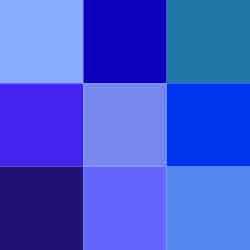
Blue is a color, the perception of which is evoked by light having a spectrum dominated by energy with a wavelength of roughly 440-490 nm. It is considered one of the additive primary colors.
On the HSV Color Wheel, the complement of blue is yellow; that is, a color corresponding to an equal mixture of red and green light. On a color wheel based on traditional color theory (RYB), the complementary color to blue is considered to be orange (based on the Munsell color wheel).
The English language commonly uses "blue" to refer to any color from navy blue to cyan. The word itself is derived from the Old French word bleu.
A Scots and Scottish English word for "blue-grey" is blae, from the Middle English bla ("dark blue," from the Old English blood). Ancient Greek lacked a word for color blue and Homer called the color of the sea "wine dark", except that the word kyanos (cyan) was used for dark blue enamel.
In the English language, blue may refer to the feeling of sadness. This is because blue was related to rain, or storms, and in Greek mythology, the god Zeus would make rain when he was sad (crying), and a storm when he was angry. Kyanos was a name used in Ancient Greek to refer to dark blue tile (in English it means blue-green or cyan). The phrase "feeling blue" is linked also to a custom among many old deepwater sailing ships. If the ship lost the captain or any of the officers during its voyage, she would fly blue flags and have a blue band painted along her entire hull when returning to home port.
Many languages do not have separate terms for blue and or green, instead using a cover term for both (when the issue is discussed in linguistics, this cover term is sometimes called grue in English). Blue is commonly used on internet browsers to color a link that has not been clicked; when a link has been clicked it changes yellow or orange or purple.
Blue is the color of truth, serenity and harmony, by helping to soothe the mind. It is good for cooling, calming, reconstructing and protecting. good for fevers, calming the body and mind, raising frequency, etc.
Blue is the color of electricity. We experience in a program created by electromagnetic energy that had a beginning and is evolving out of physical consciousness.
Blue connects with the third eye chakra.
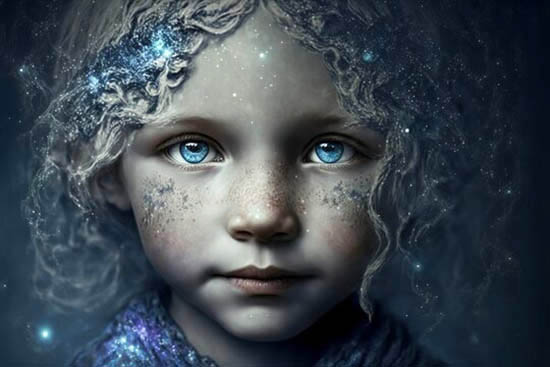
Indigo Children
Scientists trace mineral sources for sacred Maya Blue in Late Classic pottery from Buenavista, Belize PhysOrg - July 31, 2025
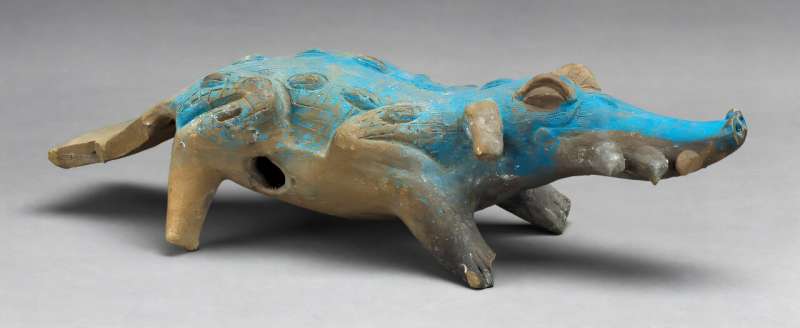
Maya Blue was a unique pigment made by combining organic indigo with inorganic palygorskite. Unlike pure indigo, it exhibits much better stability when exposed to sunlight and acids. This has allowed the color to persist for centuries, even in the tropical lowland climates of Mesoamerica.
Experts discover traces of rare artificial pigment on Egyptian mummy portraits and panel paintings Ancient Origins - August 29, 2015
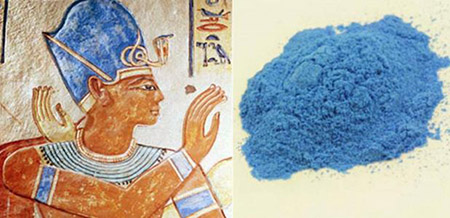
Egyptian Blue is one of the first artificial pigments known to have been used by man. First created around 5,000 years ago by heating a mixture of a calcium compound, a copper-containing compound, silica sand and soda or potash to around 850-950 C, the precious pigment was reserved for the most exquisite of artworks. In Egyptian belief, blue was considered the color of the heavens, and hence the universe. It was also associated with water and the Nile. However, scientists have now found traces of the rare pigment behind drab-colored mummy portraits, leading to a new understanding of how this particular pigment was used by artists in the second century A.D.
Prussian Blue Paint/Salt Linked to Origin of Life Science Daily - December 16, 2009
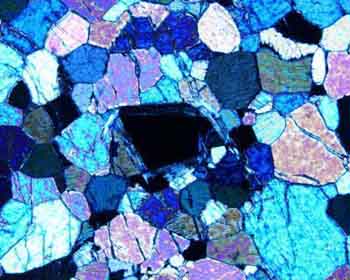
Prussian Blue (also known as Berlin blue, Brandenburg blue, Parisian and Paris blue) is a dark blue pigment produced by oxidation of ferrous ferrocyanide salts. Prussian blue was created in the early 18th century and is the first modern synthetic pigment. The pigment is used in paints, it became prominent in 19th-century Japanese woodblock prints, and it is the traditional "blue" in technical blueprints. In medicine, orally administered Prussian blue is used as an antidote for certain kinds of heavy metal poisoning, e.g., by thallium(I) and radioactive isotopes of caesium.
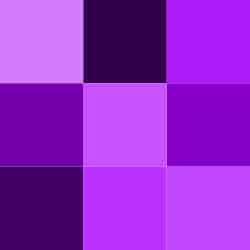
Purple is a general term for the range of shades of color occurring between red and blue. In color theory, a 'purple' is defined as any non-spectral color between violet and red. The spectral color violet is not a purple.
In art, purple is the color on the color wheel between magenta and violet and its tints and shades. This color, electric purple, is shown below.
In human color psychology, purple is associated with royalty, regality, and nobility (stemming from its use in heraldry to denote gentry)
In metaphysics purple connects with the crown chakra.
In healing purple is good for emotional problems, rheumatism, epilepsy, reducing pain, deep tissue work, bones.
The Violet Flame is supposedly charged with the light of divine freedom. It is used to burn off karma from other lifetimes on all levels.
White is a tone, the perception which is evoked by light that stimulates all three types of color sensitive cone cells in the human eye in near equal amount and with high brightness compared to the surroundings.
Since the impression of white is obtained by three summations of light intensity across the visible spectrum, the number of combinations of light wavelengths that produce the sensation of white is practically infinite.
There are a number of different white light sources such as the midday Sun, incandescent lamps, fluorescent lamps and white LEDs. The impression of white light can also be created by mixing appropriate intensities of the primary colors of light - red, green and blue (RGB) - a process called additive mixing, as seen in many display technologies.
White light reflected off objects can be seen when no part of the light spectrum is reflected significantly more than others and the reflecting material has a degree of diffusion. This is seen when transparent fibers, particles, or droplets are in a transparent matrix of a substantially different refractive index. Examples include classic "white" substances such as sugar, foam, pure sand or snow, cotton, clouds, and milk.
Crystal boundaries and imperfections can also make otherwise transparent materials white, as in the milky quartz or the microcrystalline structure of a seashell. This is also true for artificial paints and pigments, where white results when finely divided transparent material of a high refractive index is suspended in a contrasting binder. Typically paints contain calcium carbonate and/or synthetic rutile with no other pigments if a white color is desired.
In painting, white can be crafted by reflecting ambient light from a white pigment, although the ambient light must be white light, or else the white pigment will appear the color of the light. White when mixed with black produces gray. To art students, the use of white can present particular problems, and there is at least one training course specializing in the use of white in art. In watercolor painting, white areas are the absence of paint on the paper. When mixing paints in order to get a lighter color, it's advisable to mix a small amount of color to white, rather than trying to add white to the color, as it will take considerably more paint to get the desired tint.
White and Clear Quartz Crystals
White light is the octave (frequency) above purple. It has always been seen as transcendence, pure, perfection, innocence, chastity, the triumphant of spirit over the flesh, purity.
In Alchemy white is the feminine principle or highest frequency of though turning into pure consciousness.
Wearing white links to the goddess in many civilizations.
Druid priests often wore white.
In Christian beliefs white is the highest color representing the purified soul, joy, virginity, integrity, light and a holy life. White is always worn in Christian religions at the sacraments of Baptism, First Communion, Confirmation, Marriage. In Catholicism it is symbolic of the saints not suffering martyrdom and virgin saints.
To the Buddhist tradition, white is self-mastery and redemption. It is representative of being lead from bondage - the highest spiritual transformation.
In Hinduism, white is symbolic of pure consciousness, upward movement, light, and manifestation.
Maori tradition holds white as meaning truce or surrendering.
In Mayan tradition it represented peace and health.
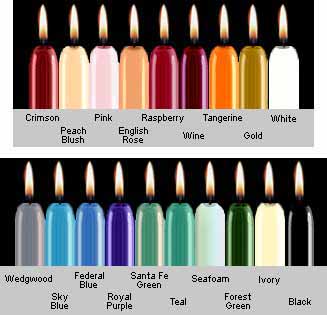
The color of a candle works well with the frequency you seek at a given point in time. This again follows the color spectrum and its meanings. For example if you want to gain knowledge, light a yellow candle. Some candles not only coordinate colors, but fragrances and shapes as well.
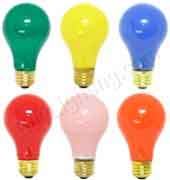
Using a lamp with a specific colored light bulb creates interesting frequencies that can allow you to see yourself in past lives, to heal, for spiritual work, and more. Fluorescent light bulbs work best in a dark room.

When meditating, envision colors entering your body with each breath. Select the color you are drawn to by frequency. Visualize it entering its color coordinated chakra as it enters and clears. Visualize yourself bathed in the colors you choose to resonate with.
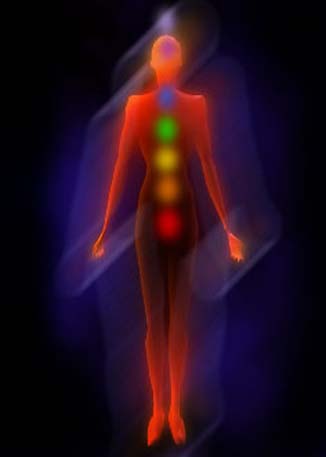
Colors and Chakras

Perception of Higher Frequency Colors

Colors and Candles
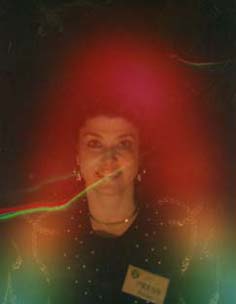
Colors and Auras
Kirlian Photography

Colors and Crystal Healing
Scientists Say They Found a New Color Humans Have Never Seen Before Science Alert - April 23, 2025

For the first time, humans might have glimpsed a rainbow of color that lies just beyond our sight - including a "blue-green of unprecedented saturation". You've never seen it before because you can't. It exists in a colorspace that our eyes have no access to.
Which areas of our brains represent the colors we see? Medical Express - May 28, 2020

Red, orange, yellow, green, blue, indigo and violet: The colors of the rainbow are well known to anyone who remembers "Roy G. Biv." However, scientific research has long shown that such colors are not inherent to the physical world, but rather a result of how our brains process light.
Earth's Oldest Color, Pink, Dates Back More Than 1 Billion Years Live Science - July 10, 2018

Is bright pink the new black? Well, not exactly, but it is the world's oldest-known color, according to new research. Researchers extracted the pigment from bacteria fossils preserved in rocks under the Sahara Desert in Mauritania, West Africa. Inside those teensy bacteria, the scientists found chlorophyll - a pigment used today by plants for photosynthesis - dating back to about 1.1 billion years ago. That's about 600 million years older than similar chlorophyll fossils found previously, scientists reported in the new study. Their findings hint that cyanobacteria, bacteria that survive on sunlight, appeared much earlier than algae, which have been traced to around 650 million years ago. And bacteria likely dominated Earth's ancient oceans for hundreds of millions of years, according to the study.
Do you see purple or blue dots and why does your perception change? Live Science - July 2, 2018
Superhuman 'Rainbow Vision' Common, But Untested Discovery - March 17, 2016
A fairly common genetic mutation in some women allow them to see more colors than the average person. But few who carry the mutation regularly demonstrate this nearly super-human rainbow vision. Results from new scientific experiments may explain why and the development of a new image-processing filter could help potential tetrachromats develop their unique talent.
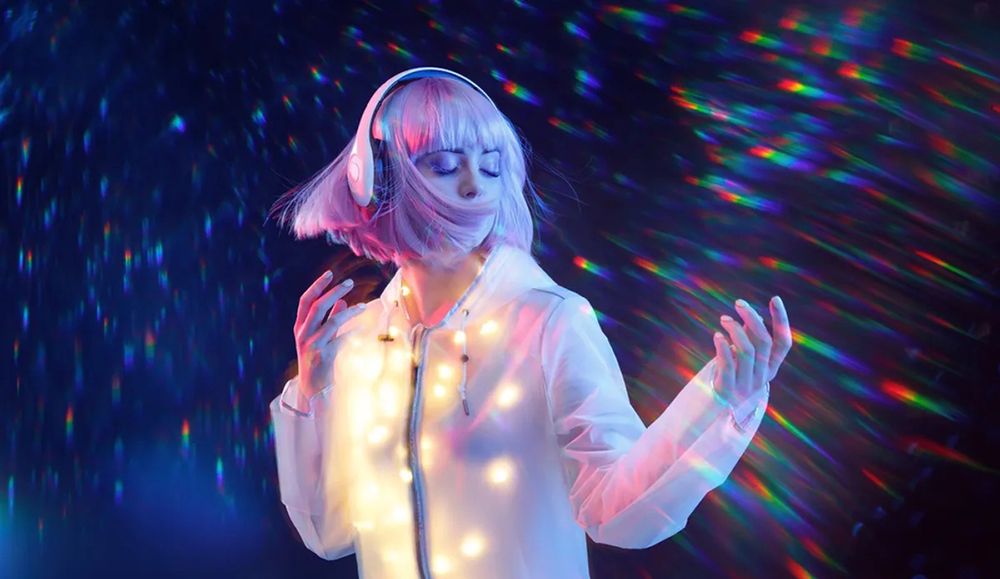
Seeing the sunnier side of life: Scientists bring a whole new meaning to winter blues Science Daily - August 5, 2015
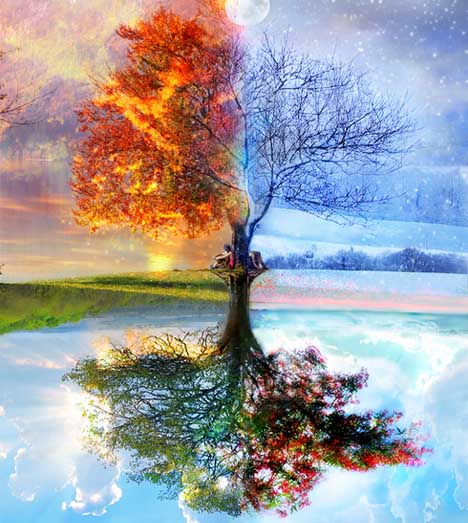
Scientists at the University of York have shed new light on how humans process color - revealing that we see things differently in winter compared with summer. The researchers examined how our color perception changes between seasons and in particular how we process the color known as unique yellow. Humans identify four unique hues - blue, green, yellow and red -- that do not appear to contain mixtures of other colors.
How the Brain Remembers Colors Live Science - June 2, 2015
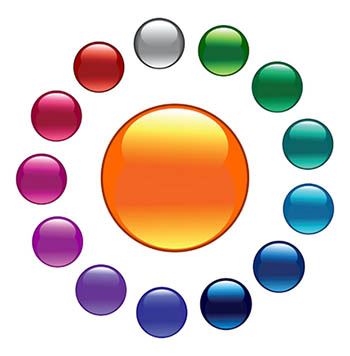
When you bring home the wrong color of paint from the hardware store, it may not be your foggy memory at fault. A new study finds that while the human brain can distinguish between millions of colors, it has difficulty remembering specific shades. For example, most people can easily tell the difference between azure, navy and ultramarine, but when it comes to remembering these shades, people tend to label them all as blue, the study found. This tendency to lump colors together could explain why it's so hard to match the color of house paint based on memory alone, the researchers said. Many cultures have the same color words or categories.
Researchers explore how prior knowledge influences our visual senses Medical Express - November 1, 2013
 >
>
The perception and processing of color has fascinated neuroscientists for a long time, as our brain influences our perception of it to such a degree that colors could be called an illusion. One mystery was: What happens in the brain when we look at black-and-white photographs? Do our brains fill in the colors? Neuroscientists showed study participants black-and-white photos of bananas, broccoli, strawberries, and of other objects associated with a typical color (yellow, red and green in the examples above). While doing so, they recorded their subjects' brain activity using functional imaging. The true purpose of the study was unknown to the subjects, and to distract their attention they were shown slowly rotating objects and told to report the direction in which they were moving.
After recording brain responses to the black and white objects, the scientists presented real colors to their subjects, in the shape of yellow, green, red and blue rings. This allowed them to record the activity of the brain as it responded to different, real colors. It turned out that the mere sight of black-and-white photos automatically elicited brain activity patterns that specifically encoded colors. These activity patterns corresponded to those that were elicited when the observers viewed real color stimuli. These patterns encoded the typical color of the respective object seen, even though it was presented in black and white. The typical colors of the presented objects could therefore be determined from the brain's activity, even though they were shown without color.
Bach to the Blues, Our Emotions Match Music to Colors Science Daily - May 17, 2013
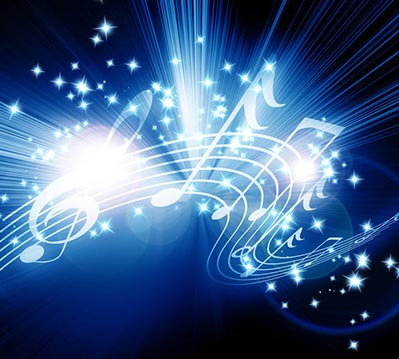
Whether we're listening to Bach or the blues, our brains are wired to make music-color connections depending on how the melodies make us feel. People in both the United States and Mexico linked the same pieces of classical orchestral music with the same colors. This suggests that humans share a common emotional palette -- when it comes to music and color -- that appears to be intuitive and can cross cultural barriers, UC Berkeley researchers said. The results were remarkably strong and consistent across individuals and cultures and clearly pointed to the powerful role that emotions play in how the human brain maps from hearing music to seeing colors.
Red-Green & Blue-Yellow: The Stunning Colors You Can't See Live Science - January 18, 2012
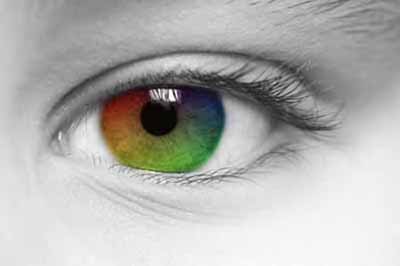
Try to imagine reddish green - not the dull brown you get when you mix the two pigments together, but rather a color that is somewhat like red and somewhat like green. Or, instead, try to picture yellowish blue - not green, but a hue similar to both yellow and blue. Is your mind drawing a blank? That's because, even though those colors exist, you've probably never seen them. Red-green and yellow-blue are the so-called "forbidden colors." Composed of pairs of hues whose light frequencies automatically cancel each other out in the human eye, they're supposed to be impossible to see simultaneously.
The limitation results from the way we perceive color in the first place. Cells in the retina called "opponent neurons" fire when stimulated by incoming red light, and this flurry of activity tells the brain we're looking at something red. Those same opponent neurons are inhibited by green light, and the absence of activity tells the brain we're seeing green. Similarly, yellow light excites another set of opponent neurons, but blue light damps them. While most colors induce a mixture of effects in both sets of neurons, which our brains can decode to identify the component parts, red light exactly cancels the effect of green light (and yellow exactly cancels blue), so we can never perceive those colors coming from the same place.
Brain study explores what makes colors and numbers collide Medical Express - November 17, 2011
Someone with the condition known as grapheme-color synesthesia might experience the number 2 in turquoise or the letter S in magenta. Now, researchers reporting their findings online in the Cell Press journal Current Biology on November 17 have shown that those individuals also show heightened activity in a brain region responsible for vision.
Different Colors Describe Happiness vs. Depression Live Science - February 9, 2010
Are you in a gray mood today? How about a blue funk? Maybe you're seeing red, because you're green with jealousy. The colors we use to describe emotions may be more useful than you think, according to new research. The study found that people with depression or anxiety were more likely to associate their mood with the color gray, while happier people preferred yellow. The results, which are detailed today in the journal BMC Medical Research Methodology, could help doctors gauge the moods of children and other patients who have trouble communicating verbally.
Red vs. Blue: Why Necktie Colors Matter Live Science - February 7, 2009
In high-stakes politics and business, there are only two colors of ties: red and blue. Oh, sure, you might spot purple or yellow now and then, but those are clear statements of aloofness, be they calculated or careless. Few world leaders or CEOs want to be seen as aloof. But does it matter whether one wears red or blue? Yes, suggest several studies, including a new one out today in the journal Science. More on that in a moment.